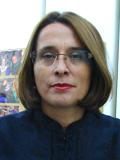
An Institute of Ethnic Studies was set up at the Bulgarian Academy of Sciences in 1947 with the purpose of exploring, studying and recording popular traditions, way of life and livelihood, both past and present. Two years on it merged with the National Ethnographic Museum - one of the oldest cultural institutions in Bulgaria. This year the Ethnographic Institute with museum at the Bulgarian Academy of Sciences turns 60.

“Ethnographic antiques, artifacts, and household items have been collected as early as the National Revival period, Museum Curator Ana Luleva told a Radio Bulgaria reporter.” Rakovsky and Karavelov, outstanding exponents of the National Revival effort and the national liberation movement of the Bulgarian against the Ottoman Empire in the 19thc. were true devotees of sustaining Bulgarian culture, the reason being that it is vividly specific and hence closely linked with the ideas of national sovereignty and revival and later on the emancipation of the newly re-emerging Bulgarian state. Nearly 30 years after the Liberation in 1878 from 500 years in Ottoman bondage, the National Ethnographic Museum was founded in 1906. Its first curator Dimitar Marinov was a looming figure in Bulgarian cultural history. His was a pioneer’s work- he dedicated a lifetime to gleaning ethnographic materials, traditions, songs, beliefs and superstitions. Prof. Ivan Shishmanov was the one to put together a programme of objectives before Bulgarian ethnography. He contended that old Bulgaria traditions, crafts and a wide variety of items should be collected on the threshold of the then new 20th century because they’d be otherwise doomed to extinction”, said Mrs. Ana Luleva.
What do the stocks of the Ethnographic Museum hold?
“We have a huge variety of fabrics, carpets, rugs, and everything else from the traditional way of life of the Bulgarians you can think of complete with an extraordinary variety of traditional attire. There are no fewer than 24 000 entries in the folk costume department alone. Then, there are items of jewelry, traditional embroidery pieces, knitted articles, household utensils made of copper, pottery, wood, etc. We also have items from Bulgarian communities residing outside the country. Many of the items we have on stock have not as yet been exhibited and we need to set up bigger exhibition areas to be able to show most of what we have in our possession to the benefit of Sofia city residents. We’re currently in the process of building an exposition of socialist daily life culture from our most recent past. We’re also working on thematic expositions featuring items both old and new. In one of them we plan to display clothes from the 18thc. all the way down to nowadays”, said Mrs. Ana Luleva.
What fields of exploration are Bulgarian ethnologists pursuing now?
“Practically all fields concerning the culture of the Bulgarians and all other ethnic and religious communities living within the bounds of this country. As well as this, we’re running a great number of projects benefiting the Bulgaria diaspora across the world. Migration in latter years has assumed mammoth proportions. Bulgarian ethnologists are working in Ukraine and Moldova where there are sprawling Bulgarian communities, in Spain and other Mediterranean countries and America. So, let me assure you that we know what is happening to the Bulgarian ex-pats, we know their identity and Bulgarian self-awareness”, said in conclusion Mrs. Ana Luleva, curator of the Ethnographic institute with museum at the Bulgarian Academy of Sciences, which turned 60 in 2009.
English version: Margarita Dikanarova
For the first time, two of the most mysterious archaeological sites in the Eastern Rhodopes have been studied in detail from air. Bulgarian archaeologists scanned the Harman Kaya rock complex near the village of Bivolyane and the ancient Asara fortress..
After the Liberation in 1878, Bulgaria began to develop at a pace that would make up for the centuries-long absence from the world history map. Young Bulgarians graduated from prestigious European universities and took their knowledge to their homeland..
One of the three biggest Hebrew holidays, Pesach (Passover) starts at sundown (5 PM) on 22 April and ends on 30 April. It is a movable feast, falling after the 14 th day of the spring month of Nisan which starts after the spring equinox with the..
After the Liberation in 1878, Bulgaria began to develop at a pace that would make up for the centuries-long absence from the world history map. Young..
For the first time, two of the most mysterious archaeological sites in the Eastern Rhodopes have been studied in detail from air. Bulgarian archaeologists..

+359 2 9336 661
